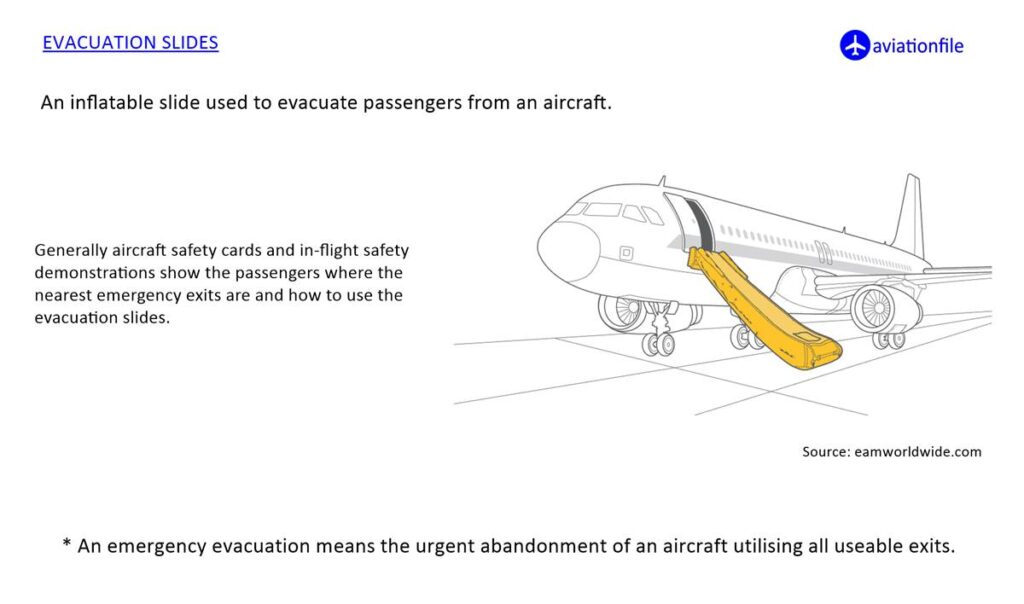Airplane Emergency Evacuation: Procedures and Tips
While the odds of experiencing an airplane emergency are incredibly low, being prepared for the unexpected is paramount for ensuring your safety. Air travel remains one of the safest modes of transportation globally, but familiarizing yourself with airplane emergency evacuation procedures can make a world of difference in a critical situation. Even a basic understanding of where exits are located and how to use emergency equipment can shave off precious seconds during an evacuation. The calmer and more prepared you are, the better your chances of navigating an emergency situation effectively. This guide will equip you with the knowledge and essential tips you need to remember in the event of an airplane evacuation. By following these steps and paying close attention to flight attendant instructions, you can significantly increase your chances of a safe and successful evacuation
Pay attention to the safety briefing
The first step in emergency evacuation is to listen carefully to the safety briefing given by the flight attendants. They will explain the emergency procedures, including how to fasten and unfasten your seatbelt, where the emergency exits are located, and how to use the oxygen masks.
Know the location of the emergency exits
Before takeoff, make sure you locate the emergency exits closest to your seat. There are usually two types of emergency exits on an airplane: over-wing exits and rear exits. The emergency exits are clearly marked with signs, and there are usually floor-level lights that will help guide you to them in the event of an emergency.
Leave all your belongings behind
In an emergency situation, you will not have time to grab your belongings. Leave everything behind and head straight to the nearest emergency exit.
Follow the instructions of the flight attendants
In case of an emergency, the flight attendants will give you instructions on what to do. Follow their instructions and remain calm. They are trained to handle emergency situations and will help you exit the plane safely.

Use the evacuation slide
If the emergency exit is an over-wing exit, you will need to use the evacuation slide. The slide is designed to help you exit the plane quickly and safely. Remove your shoes and any sharp objects before sliding down to avoid puncturing the slide.
During an evacuation:
- Stay calm: Panic is contagious. Take deep breaths and focus on getting out safely.
- Leave everything behind: Your belongings can wait. Grab only essential items like medication or glasses if absolutely necessary.
- Follow instructions: Flight attendants are trained to guide you. Listen to their commands and obey them without question.
- Move quickly, but orderly: Don’t push or shove. Use all available exits and follow the designated evacuation routes.
- Head down, cover your mouth: Smoke and debris can be a major hazard. Stay low, cover your mouth and nose with your arm, and don’t look back.
- Inflate the slide properly: Once outside, follow the flight attendant’s instructions on deploying the evacuation slide. Slide down feet first, holding onto the side rails.
- Move away from the aircraft: Once clear, move at least 50 feet away from the plane and stay clear of emergency responders.
Miracle on the Hudson: A Real-Life Example of Airplane Evacuation Success
One harrowing example of a real airplane evacuation is US Airways Flight 1549, also known as the “Miracle on the Hudson.” In 2009, this Airbus A320 struck a flock of geese shortly after takeoff from New York’s LaGuardia Airport. Both engines were disabled, and with no time to reach another airport, the pilot, Chesley Sullenberger, skillfully ditched the plane in the Hudson River.
Thanks to quick thinking and exceptional crew actions, all 155 people on board were evacuated safely. Passengers donned life vests as instructed and exited onto the wings, where they were rescued by boats that arrived within minutes. The success of this evacuation highlights the importance of following crew instructions and staying calm during an emergency.
References and Further Reading:
- Federal Aviation Administration (FAA): Emergency Evacuation Procedures for Passengers https://www.faa.gov/air_traffic/publications/atpubs/aim_html/chap_6.html
- International Civil Aviation Organization (ICAO): Emergency Evacuation and Ditching Survival Techniques https://igat.icao.int/ated/TrainingCatalogue/Course/585
- National Transportation Safety Board (NTSB): Emergency Evacuation of Commercial Airplanes https://www.ntsb.gov/safety/safety-studies/Documents/SS0001.pdf


